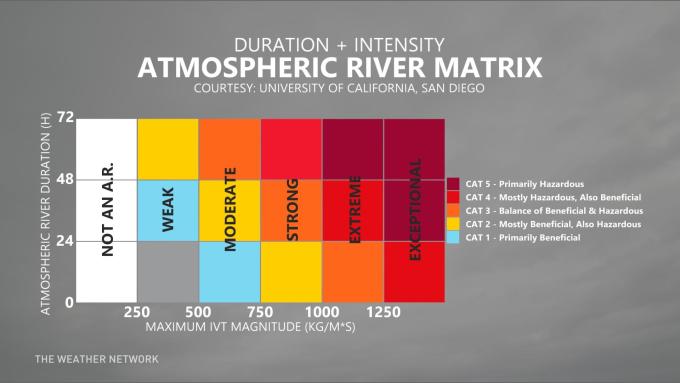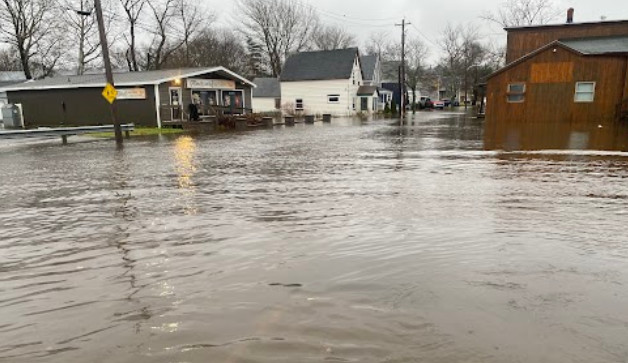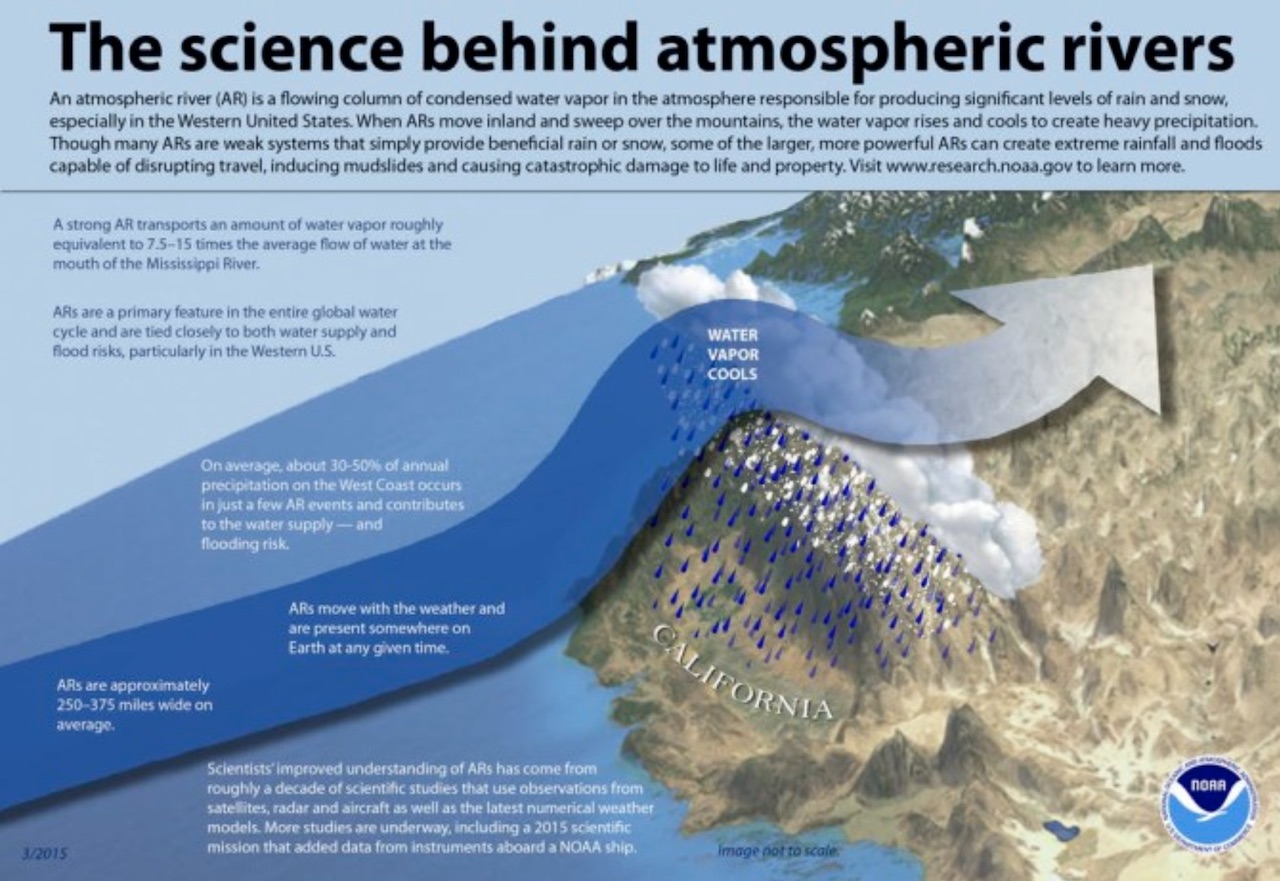West vs East: Canada sandwiched between atmospheric rivers
Wednesday, November 24th 2021, 9:56 am - When the atmosphere is at its most active, we can see deluges on both coasts simultaneously, which is the case this week. The difference in atmospheric rivers in these regions boils down to duration and elevation.
Atmospheric rivers can often be a major player in Canada’s weather story, delivering extreme amounts of moisture from the deep tropics all the way to our shores.
The strongest of these atmospheric rivers can deliver rainfall amounts in the hundreds of millimetres, causing devastating flooding and wreaking havoc on infrastructure, like the recent event in B.C.
RELATED: Canada will introduce a new impact scale for atmospheric rivers
These features are always a part of our atmosphere, but atmospheric rivers reach their strongest intensity in the fall and winter, when the temperature contrast between the balmy tropics and the frigid Arctic is at its strongest. They can develop in the Pacific and Atlantic oceans. And when the atmosphere is at its most active, we can even see deluges on both coasts simultaneously, which is the case is this week. The difference comes down to duration and elevation.

DURATION
West Coast atmospheric rivers tend to last longer because the warm, moist water is west and south of the land mass. In general, we know the atmosphere likes to flow from west to east, so these atmospheric rivers can be particularly stable and long-lasting.
Meanwhile, East Coast atmospheric rivers are shorter in duration and tend to sweep across the coast more quickly since the warm, moist water is south of the land mass. Though the atmosphere can flow from south to north in a very amplified pattern, these tend to be less stablem, and a result, last for a shorter period of time.

Flooding in Sydney, N.S., after atmospheric river brings heavy rain this week. (Nathan Coleman/The Weather Network)
ELEVATION
For an atmospheric river to produce heavy rainfall, you need a hoisting mechanism -- moisture combined with lift equal precipitation.

(NOAA)
In the case of an atmospheric river, the lifting mechanism is mountain ranges (orographic lift). The West Coast has much bigger mountain ranges, so the orographic boost is stronger, and you can extract more moisture from the atmospheric river to fall as precipitation.
RELATED: More trouble lies ahead for flood-stricken B.C. with new rain barrage
While the East Coast doesn’t have as much terrain, one feature that does increase the impacts is the large river basins (such as the Saint John River). These can collect water over a large area and funnel it, creating floods comparable to a spring snowmelt event in a short period of time.
No comments:
Post a Comment